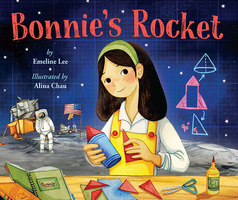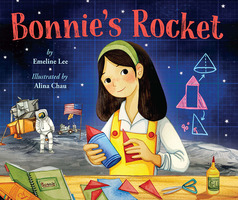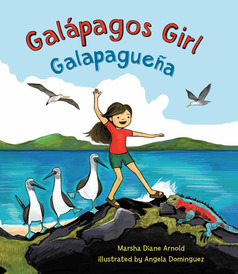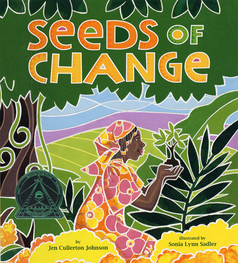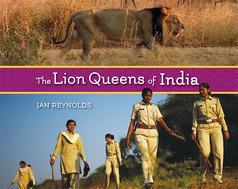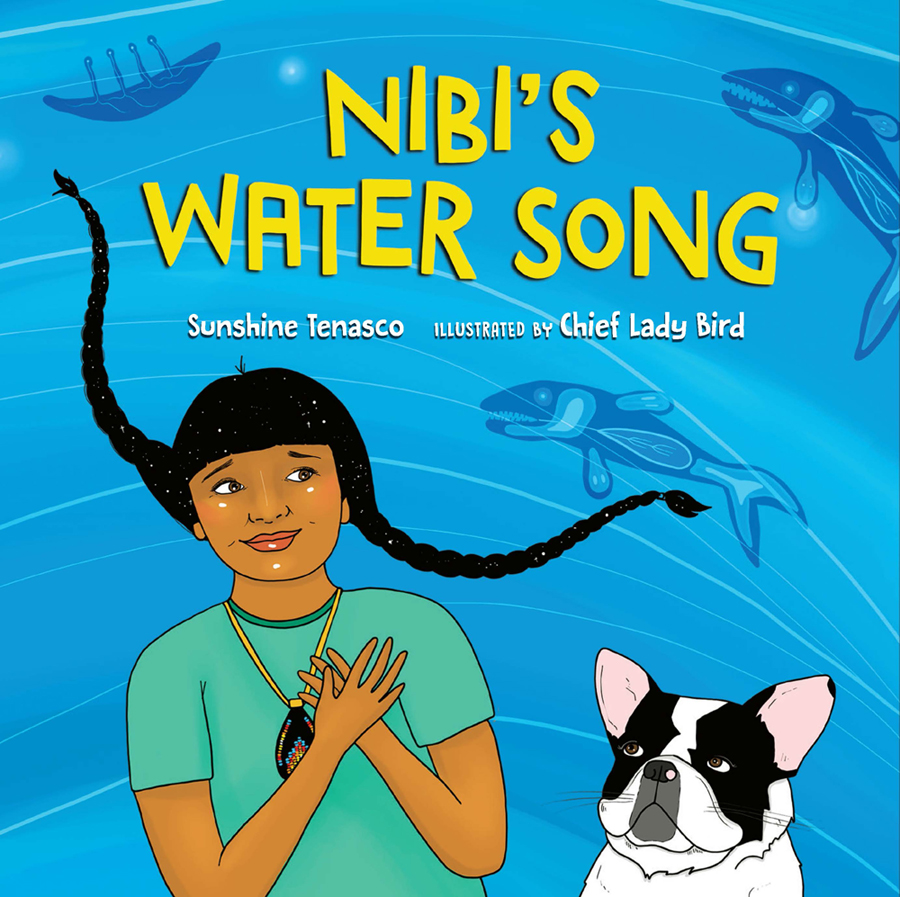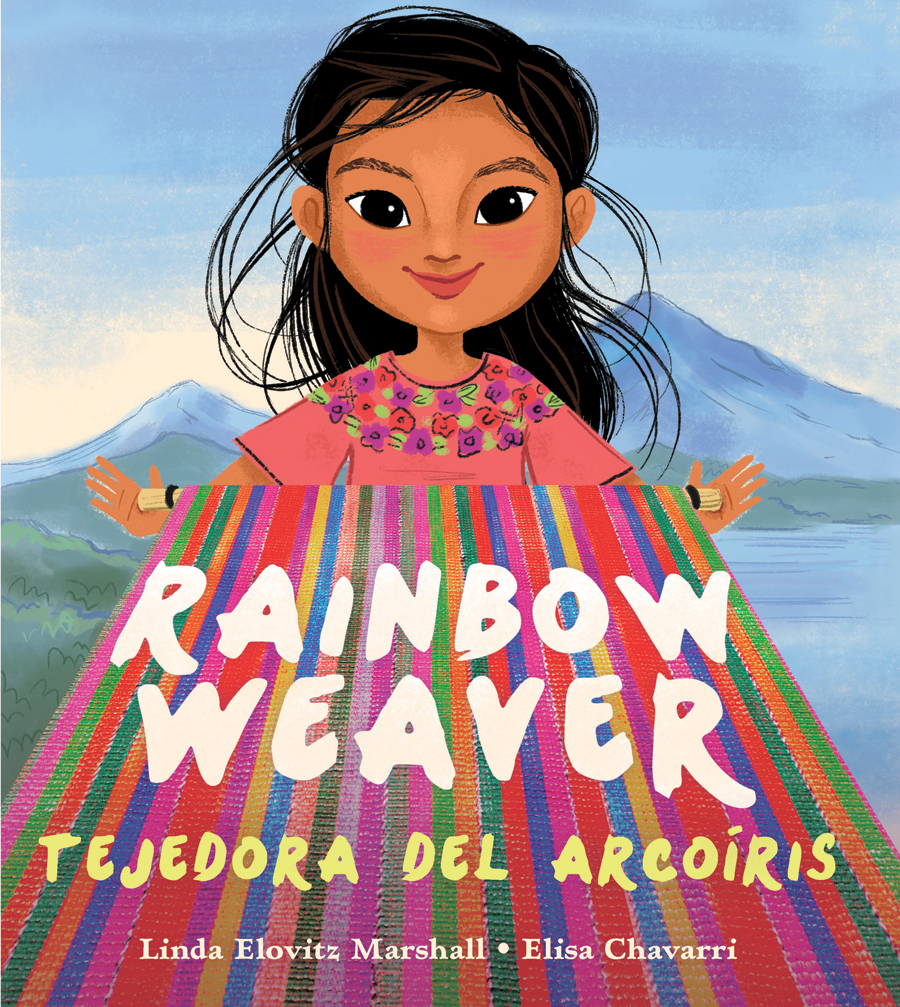February 11 is The International Day of Women and Girls in Science. Build excitement about science for young girls and women in your life with these activities and books!
Build a Model Rocket with Bonnie’s Rocket
Bonnie’s Rocket by Emeline Lee and illustrated by Alina Chau
“Lee accessibly introduces scientific principles as Bonnie toils through the construction of her rocket. Readers follow along as she troubleshoots and gets inspired. . . An engaging father-daughter STEAM story full of support and scientific inquiry.” —Kirkus Reviews
View the Teacher’s Guide.
Delve into the Animal Kingdom in Galápagos Girl / Galapagueña
Ask budding zoologists to pick their favorite animal from Galápagos Girl / Galapagueña. Then, use the resources on Galapagosislands.com and Natgeokids.com to learn more about the animal and their characteristics. As they conduct their research, have young people ask themselves: What does this animal eat? Where does this animal live? Why does it live in the Galápagos Islands?
Galápagos Girl / Galapagueña by Marsha Diane Arnold and illustrated by Angela Dominguez
“In 2007, Arnold visited the Galápagos Islands where she met biologist and naturalist guide Valentina Cruz. This book was inspired by the childhood stories Cruz shared with the author about growing up and getting to know the animals on Floreana, one of the many Galápagos Islands. . . Readers are presented here with an unsung and worthy heroine.” —School Library Journal
View the Teacher’s Guide.
Explore Biology and Chemistry with Seeds of Change
Nobel Peace Prize winner Wangari Maathai studied biology and chemistry, and her work relates to botany (plant biology) as well. Have students research these different branches of science and create a chart showing the main focus of each. Encourage them to discuss how each branch of science plays a role in Wangari’s work as an environmentalist. If your city, town, or school community has a tree planting program, find out if there are ways for students to get involved.
Seeds of Change: Planting a Path to Peace by Jen Johnson and illustrated by Sonia Sadler
★ “This debut picture biography, idealized and inspiring, draws on Wangari Maathai’s autobiographical writing to present an overview of the activist’s life from childhood to the present. . . Richer than other treatments of Maathai for children and more grounded in her work’s implicit feminism.” —Kirkus Reviews, starred review
View the Teacher’s Guide.
Discuss Endangered Species with The Lion Queens of India
Invite aspiring wildlife biologists to select an animal from the World Wildlife Fund‘s list of endangered species to research. Provide some guiding questions for students: What does this species eat? What are its predators? How does this species travel? Where do they live? What impact have humans had on this species? Why are they endangered? Why did students pick their particular animal to do a research project on? Students can present their findings with photographs and other visual elements of their choosing to a partner, small group, or whole class.
The Lion Queens of India written and photographed by Jan Reynolds
“Gir Wildlife Sanctuary’s first female forest ranger and original ‘Lion Queen,’ Rashila Vadher, narrates this compelling introduction to her life’s work. . . Vadher’s passion for her work, respect for the lions, and commitment to education come through in the conversational text and many well-chosen photos.” —The Horn Book
View the Teacher’s Guide.
Fight for Access to Clean Water with Nibi’s Water Song
Conduct a study on the water crisis affecting Native and First Nations communities throughout Canada and the United States. Students can answer the following guiding questions: What nations does this water crisis impact? How does lack of clean drinking water affect the immediate community? Connect the situation facing Native folks with that of predominantly Black neighborhoods like Flint, Michigan, and Jackson, Mississippi. Consider the role systemic racism plays in the intentional lack of resources to these people and areas.
Nibi’s Water Song by Sunshine Tenasco and illustrated by Chief Lady Bird
“Nibi’s arc educates readers about the lack of potable water in many Indigenous communities while encouraging children to speak out about conservation issues. In saturated digital illustrations by Bird (who is Chippewa/Potawatomi), cool-toned backgrounds are laced with Native designs of woodland-style fish and florals that communicate the interconnectedness of all living beings alongside a story about an urgent issue.” —Publishers Weekly
View the Teacher’s Guide.
Observe the impact of litter with Rainbow Weaver/Tejedora del arcoíris
Challenge young people to look around their school or community, and observe where they see littering or trash. Discuss the impact of pollution on humans and the environment. Brainstorm possible ways to help, like a group clean-up effort, making posters to discourage littering, writing to the school or local paper, etc.
Rainbow Weaver/Tejedora del arcoíris by Linda Elovitz Marshall and illustrated by Elisa Chavarri
“Set in Guatemala and based on Mayan women’s resourcefulness and the tradition of weaving, Marshall’s bilingual story tells how Ixchel uses plastic bags littered in her community to create beautiful, rainbow-colored weavings. . . A cheerful tale of innovation with strong multicultural ties.” —Booklist
View the Teacher’s Guide.








